Haskoy on the Golden Horn
I’m very persistent when it comes to exploring neighbourhoods in Istanbul if it means finding the remains of an old mosque or hamam I’ve read about but never seen. I’ll happily walk up and down the same street numerous times and ask for directions in my not-quite-perfect Turkish from anyone who looks like they can assist me. Given how helpful Turks are and their delight at speaking to a foreigner in their native tongue, this means I get to talk to lots of different and often surprisingly interesting people, practice the same sentences over and over in impromptu free Turkish lessons and eventually find what I am looking for, every time. That was, until I went to Haskoy in search of a Karaimite Synagogue with my friend Nurhan.
Although the rather run down streets would suggest otherwise, Haskoy has a rich and complex history. The area has been populated since the 6th century if not earlier, and was once an important centre for orthodox Christians, Armenians and Jews. Over the centuries it’s had numerous names. At one time it was called Areovindou or Aravindou (Arabant in Turkish) after a nobleman who built his summer house here. Starting from the 8th century it took the name Prikidion after a monastery built by one Ioannes Pikridios. He was a protospatharios, that is, the first spatharios, a type of high ranking Byzantine official.
A community built up around this and other monasteries and churches including the Ayios Panteleimon, built by Teodora, the wife of Emperor Teofilos, but it hasn’t survived. By the 16th century (after the Fall of Constantinople) the inhabitants of the area were under the protection of the Holy Martyr Paraschevi. Agia Paraskevi, the Church of St. Paraskevi, was the focus of the community and according to some sources, lent its name the neighbourhood which was then known as Parasköy. Over time Parasköy contracted, the P turned into an H and modern day Haskoy was born. However others claim the name changed to Haskoy because Mehmet the Conqueror’s army pitched their tents here. A stone pillar tucked away in the courtyard of the Handan Ağa Mosque confirms this. It commemorates a bridge built across the Gold Horn on 29 April 1453 presumably to allow the troops to cross over the city’s then capital. Either way the name stuck.
In its day, Haskoy was one of the most important Jewish districts of Constantinople. Evliya Çelebi wrote there were about 11,000 Jews living in Haskoy in the 17th century, a figure comparable with that of Thessaloniki. They were spread over eleven different neighbourhoods known as millet, communities of people born into the same areas and of the same religion. Part of the Ottoman administrative system, millet were mainly used to distinguish subjects from non-Muslim communities*, and as well as the Jewish millet there were two populated solely by Greeks, while the Muslims and the Armenians also had their own. The latter were largely immigrants from Eğin in the Erzincan region and worked in the building trade. It’s hard to imagine now (and believe me, I have a really good imagination) but there were once around 3000 multi-storey houses with gardens, 600 shops, some 50 tanneries, 100 taverns and orchards full of lemon and bitter orange trees as well as muscat grape crops. These were made into wine for which the area, and no doubt many of its 100 taverns, were famous. In addition there were grand dwellings, Roman baths and even a famous beach.
Sephardic Jews exiled from Spain and Portugal in 1492 were brought to Haskoy by Bayezid II and lived here alongside Romaniote and Ashkenazi Jews. When construction of Yeni Camii, the New Mosque, began in Eminönü in 1597 on land owned by Karaite Jews, they were relocated to Hasköy. Around forty families were then exempt from paying tax for life. The Karaites are Central Asian in origin and in the 6th century they immigrated to the Caucasus and then to the Ukraine. Fierce and proud, they also lived in Lithuania.
I particularly wanted to see the Karaite Synagogue (Karahim Sinagogu in Turkish). Also known as Kal Ha Kadoş Be Kuşta Bene Mikra Synagogue, it’s one of the few remaining links to a once large Karaite population living in Istanbul. My research suggested it would be easy to find. I walked the little man through street shots on Google Map and worked out the synagogue was near Mustafa Ağa Çeşmesi, just one street back from Haskoy Caddesi, the main road. Nurhan and I met at the ferry wharf and found the fountain within a few minutes. Likely the only surviving example of a total of thirteen such fountains once in operation in the district, it’s unusually low to the ground, probably the result of the street surface being built up over the centuries. It sits almost unnoticed between a non-descript building and a garage run by an inquisitive car repairman. We also saw the high walls guarding the Holy Martyr Parachevi Church, but more of that later.
I paused to consult my notes and the car repairman immediately asked where we wanted to go. Nurhan told him and then listened carefully to his long, detailed and rather confusing directions. Basically we got lost after going dumduz (absolutely straight) and up and left and right and around but nevertheless managed to stumble on the Maalem and Abudara Sinagogues. At least I think we did. I don’t speak Hebrew and both were closed so we couldn’t ask anyone inside about them, but their locations did correspond to the street names I’d written down. A women passing the locked gate of the second one helpfully confirmed it was closed and told us we’d find the Karaimite synagogue if we went dumduz for a long way and then straight down. This time we were more successful, except she sent us back to the Holy Martyr Parachevi Church again.
The Holy Martyr Paraschevi, the patron saint of the church, lived in the time of Emperor Antonin, and was originally from Italy. Paraskevi was named for her day of birth, a Friday (paraskevi) and early on showed an interest in the mysteries of the Christian faith. She read books and participated in prayers in church and after her parents died, shared her wealth with the poor then became a nun. Such was her oratory ability and her reputation as a healer of eye diseases, she succeeded in bringing many Greeks back to the church. Apparently the Emperor was much taken by her beauty and skill and tried to persuade her to renounce her faith.
When she refused he tortured her. A scalding hot iron helmet was put on her head but she didn’t burn. She was thrown into a cauldron of hot oil and the liquid immediately cooled on touching her body. Eventually she splashed the emperor with hot oil, blinding him and causing him to cry out for mercy. Calling her the handmaid of the true god he promised that if she restored his eyesight he would become a believer. Paraschevi did as he asked and on being able to see again Antonin and all the members of his family were baptised and converted. Afterwards she travelled through cities and villages preaching the name of the Lord, marking people with the sign of the cross and declaring to all that she was a Christian. Her enemies tried to challenge her faith and threaten her life but couldn’t force her to recant. Eventually, on July 26 she was decapitated with a sword, and the date is celebrated as her saint’s day.
Despite the exciting backstory all we saw of the church were the high exterior walls. From my reading I know there was originally a Byzantine church on the site, but it was rebuilt from the ground up in 1692 with help from a donation by St Constantine Brancoveanu, a Romanian prince. As a result church is also dedicated to the Holy Martyrs of Brancoveni, Constantin Brancoveanu and his sons, Constantin, Stefan, Radu and Matei, together with Saint Ianache. Due to this connection the church operated as a place of worship for the Romanian Orthodox community in Turkey from 2004 until 2014. More restoration work took place between 1724 and 1754 and four imperial icons from the original iconostasis of the first Byzantine church were preserved. They are the Pantocrator, the Mother of God with baby Jesus, Saint John the Baptist and the patron saint Paraschevi. A marble casket in the nave contains relics of another martyr, Arghira, the protector of seamstresses and misjudged women.
We were contemplating ringing the bell to see if someone would let us in to see these treasures when we were spotted by the friendly car repairer again. He called us over and had it not been Ramazan I’m sure he would have offered us tea. After checking with a colleague and a passing neighbour he suggested we ask an old man working as a tailor. Both agreed he’d lived in the area a long time and probably knew more than them. This set of directions lead us into a small grubby back street full of greasy shops stacked with car parts and electronic goods but nothing that looked like a tailor’s workshop. We went back onto the main street again and this time asked about the elusive synagogue in a kebab shop and then a florist’s. The first had no idea but the second, an older man, delightedly gave us more careful, extremely detailed instructions. Optimistically we set off, turning right past the shop, left, then right and left once more, only to find ourselves heading straight towards the car repairman again. Quickly deciding we didn’t want to turn up outside his workplace a third time we cut down the nearest side street and made our way back to Haskoy Caddesi.
In amongst all the walking backwards and forwards we did manage to find one landmark without any help and that was the Kiremitçi Ahmet Camii. Famous for a minaret made of red bricks, it’s located in the appropriately named (and easy to find) Kirmizi Minare Sokak (Red Minaret Street). The mosque name, Ahmet the Tile Maker, is apt as the area where it’s located is known as Kiremitçiler (roof tile makers) but dates back to Byzantine times when it was called Keramaria, meaning potter. Starting from the Byzantine period right up to the 20th century, Haskoy was known for the production of pottery. Workshops where ceramics and jugs were made lined the streets as well as brick threshing floors, all supplied with clay from a long lost steam called Kalaycıbahçe (Ilios). Now all that remains of this once thriving industry is the small Kiremitçi Ahmet Mosque with its red minaret and pretty interior.
After trying and failing to find the synagogue for a third time we decided to cut our losses and try and visit Aynalıkavak Kasrı, back along the Golden Horn in the direction of Karakoy. Nurhan told me she’d passed it in the bus so we were confident we’d find it. On the way we passed another former synagogue, the Ezger or Esgher Synagogue. Built in the first half of the 19th century it was most recently used as a nargile café after being restored as a library in 2010. Now it’s being restored once more and will reopen in the not too distant future as a youth library and research centre.
Our path took us past the periphery of a huge expanse of land that once housed the Tersane shipyards, now being converted into a massive science complex with three museums, conference halls, a digital library, workshops and innovation and training centres. In the past much of the Haskoy population would have been employed here, as well as in smaller operations and numerous workshops. It’s no surprise then that the Camondo Institute founded by Abraham de Camondo, the banker best known for the Camondo Stairs in Karakoy, operated in Haskoy from 1858 to 1889. It was one of the first regular schools in Istanbul and the Ottoman Empire for Jewish students. The first theatre was built in the neighbourhood in Ottoman times and it was here, in a house in Haskoy, that the famous French writer Pierre Loti stayed on his first visit to Istanbul.
On arriving at Aynalıkavak Kasrı we were pleased to see it open although a little disappointed the gardens were closed (it was during Covid and they are open now). After paying the entry fee a guard escorted us to the building, waited while we put on our plastic shoe covers, showed us how to use the audio guides and then waited patiently as we took our time to marvel at the interior. Photography is forbidden, but we marvelled at the exquisitely hand-painted wall panels, lush furnishings and serene views over the gardens. You can read more about the history in my alternative guide, Istanbul 50 Unsung Places.
It was a rewarding end to what was a fun day with a girlfriend but disappointing in terms of my plan to explore Haskoy with the aim of writing a post that made you, my readers, add it to your itinerary and raring to visit the next time you’re in Istanbul. I’m not saying don’t go to Haskoy, after all there’s the marvellous Rahmi M. Koç Museum to see. It’s Turkey’s first industrial heritage museum built on the site of an old shipyard and anchor-making factory and you don’t need to be a kid or even an enthusiast to enjoy the extensive collection of old cars, trams and buses, reconstructed shops and even a submarine. I’m just saying if you do come, enjoy the ride on the Haliç Hattı ferry, visit the museum and if you can find it, have a cup of coffee at the areas only 3rd wave coffee shop (either they’re very brave or detect a trend in the neighbourhood I can’t yet see).
I hope you enjoy seeing Istanbul through my eyes and if you do know the location of the Karaite Synagogue and are prepared to take me there, the coffee’s on me. To receive my latest posts direct in your inbox don’t forget to subscribe to my blog (it’s free) by entering your email address in the box at the top right hand side of the page. Iyi geziler!
************************
*you can find further explanations of millet and Turkey’s multicultural history in Amy Mill’s well-researched and fascinating study of Kuzguncuk on the Asian side of Istanbul in her book Streets of Memory: Landscape, Tolerance, and National Identity in Istanbul.
******************************
Planning to come to Istanbul or Turkey? Here are my helpful tips for planning your trip.
For FLIGHTS I like to use Kiwi.com.
Don’t pay extra for an E-VISA. Here’s my post on everything to know before you take off.
However E-SIM are the way to go to stay connected with a local phone number and mobile data on the go. Airalo is easy to use and affordable.
Even if I never claim on it, I always take out TRAVEL INSURANCE. I recommend Visitors Coverage.
I’m a big advocate of public transport, but know it’s not suitable for everyone all the time. When I need to be picked up from or get to Istanbul Airport or Sabiha Gokcen Airport, I use one of these GetYourGuide website AIRPORT TRANSFERS.
ACCOMMODATION: When I want to find a place to stay I use Booking.com.
CITY TOURS & DAY TRIPS: Let me guide you around Kadikoy with my audio walking tour Stepping back through Chalcedon or venture further afield with my bespoke guidebook Istanbul 50 Unsung Places. I know you’ll love visiting the lesser-known sites I’ve included. It’s based on using public transport as much as possible so you won’t be adding too much to your carbon footprint. Then read about what you’ve seen and experienced in my three essay collections and memoir about moving to Istanbul permanently.
Browse the GetYourGuide website or Viator to find even more ways to experience Istanbul and Turkey with food tours, visits to the old city, evening Bosphorus cruises and more!
However you travel, stay safe and have fun! Iyi yolculuklar.
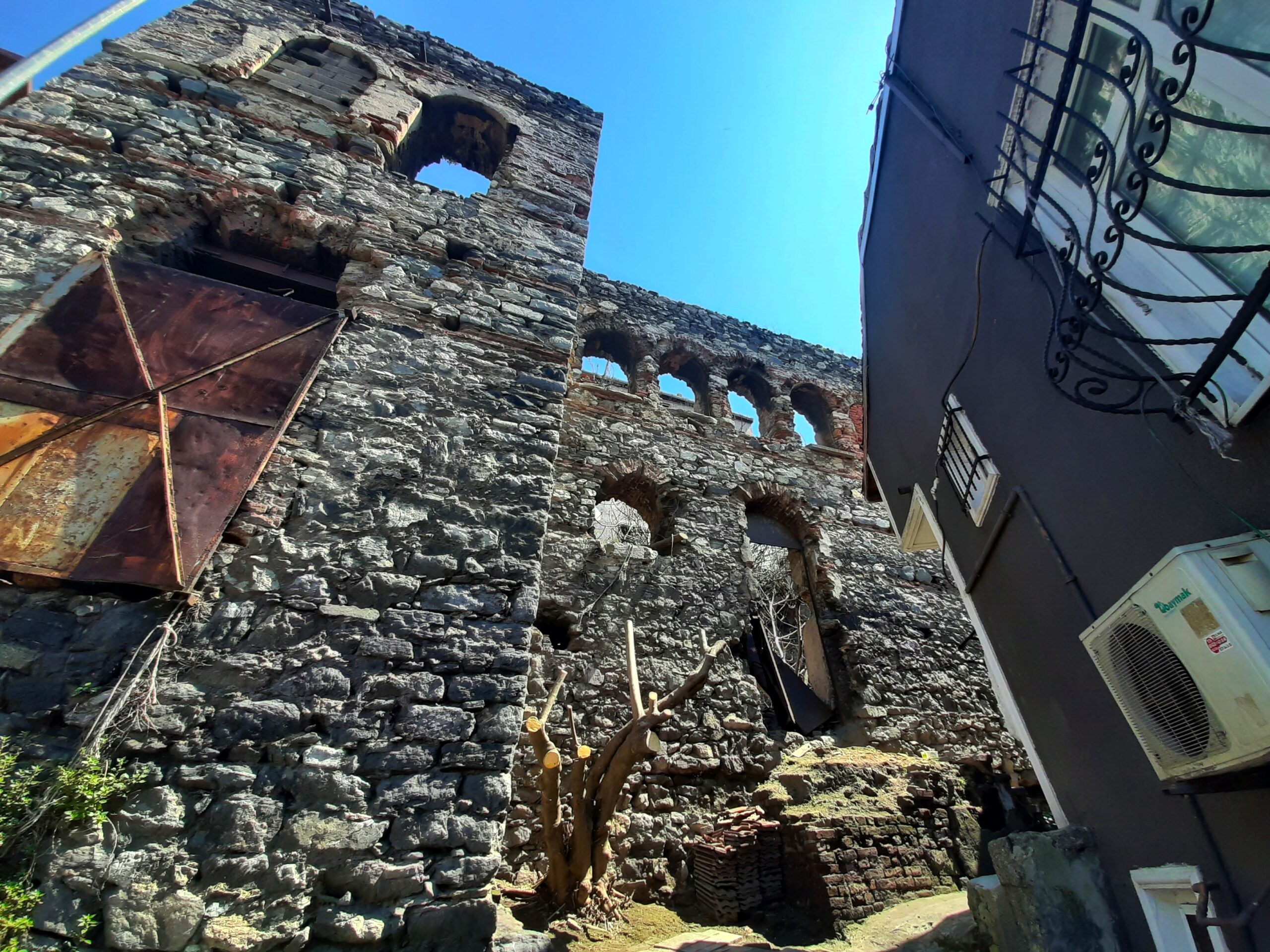
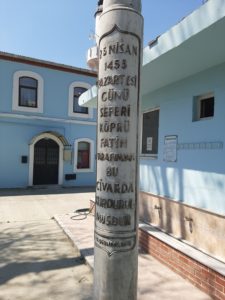
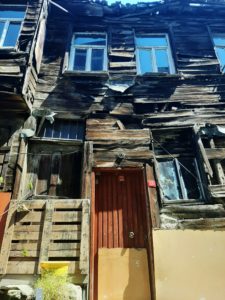
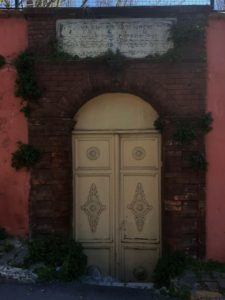
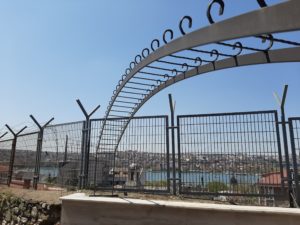
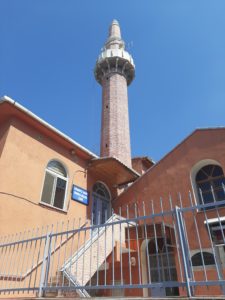
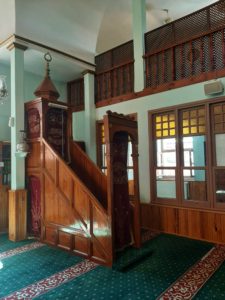
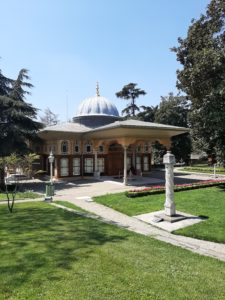
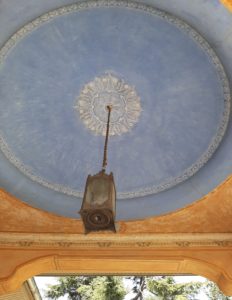
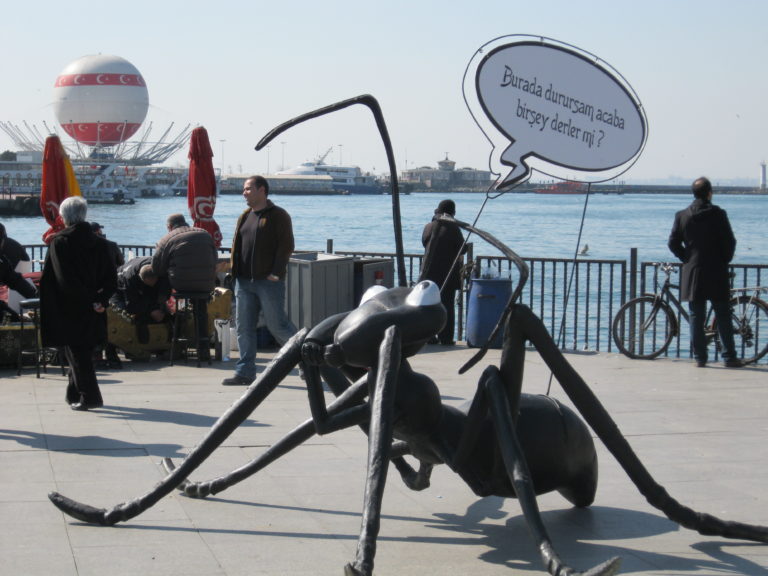
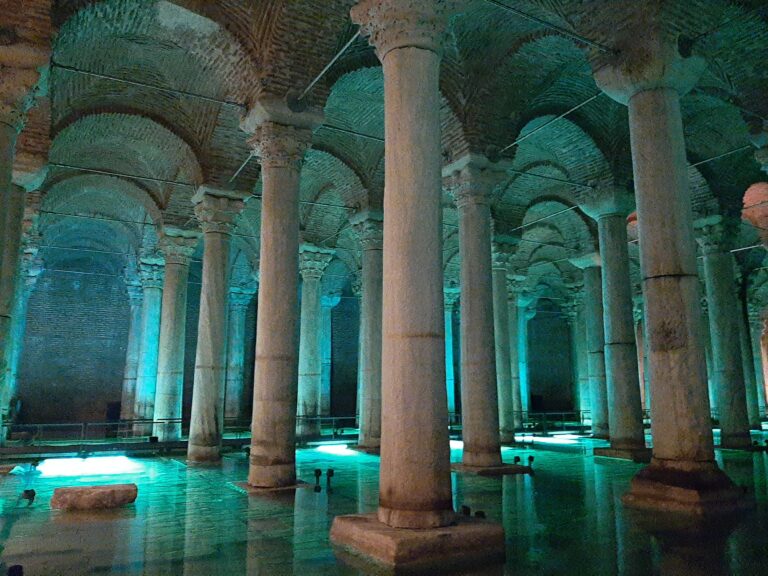
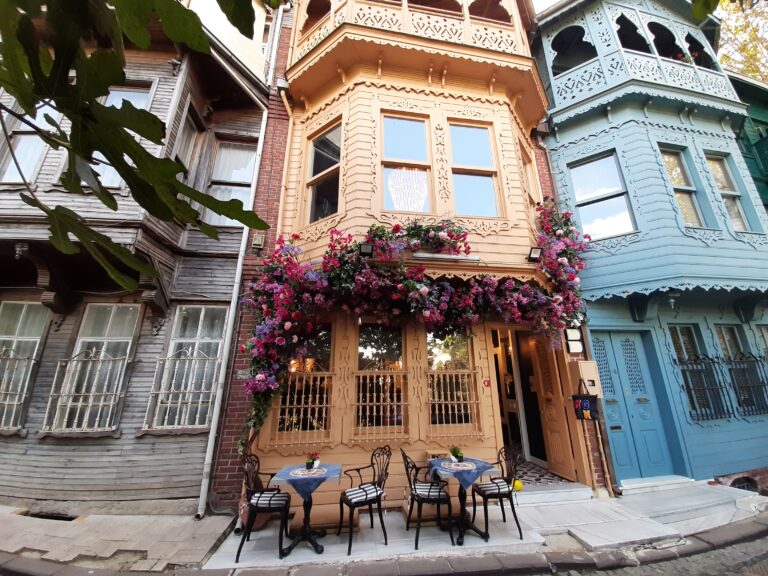
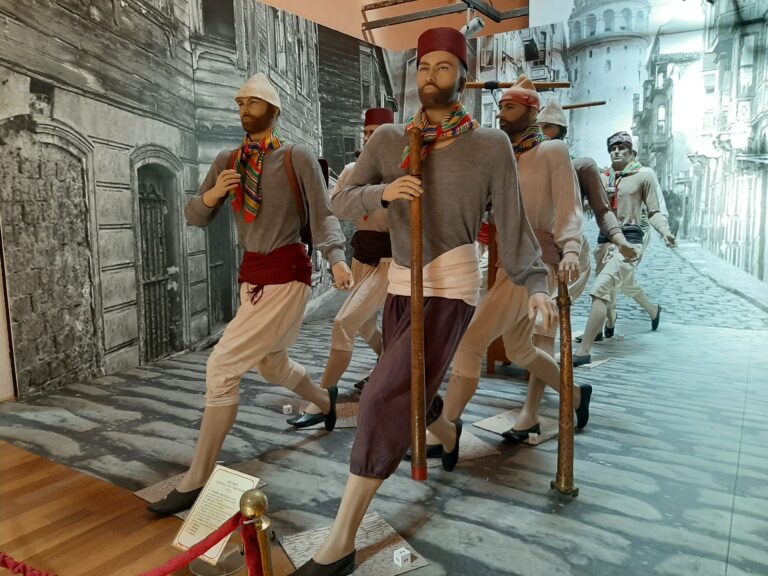
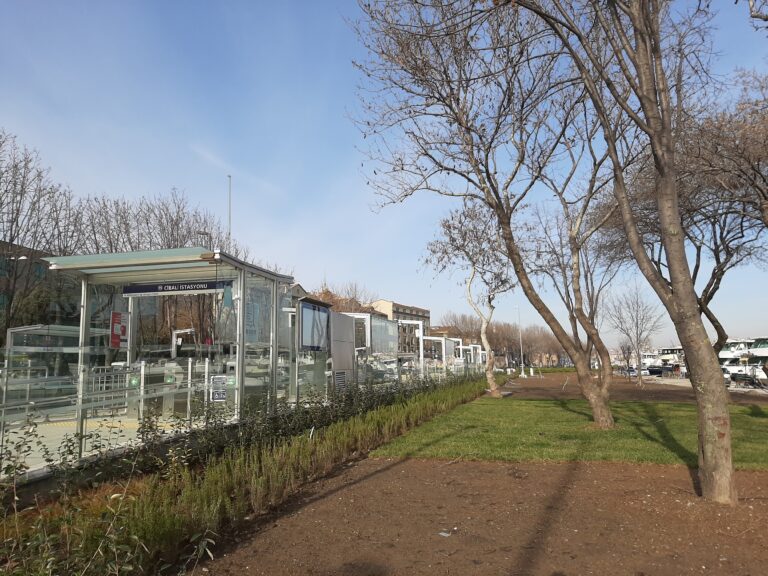
I’m sure you’ve passed by the synagogue and didn’t notice it. It is hidden behind a tall fenced wall at the corner of Aziz and Mahlul sk., completely incospicuous from the outside. Even the small door that serves as entrance to the courtyard of the synagogue is completely removed of any adorments or inscriptions. Only the barbed wire above the tall wall suggests that something is hidden inside.
Using your description and thinking back on the day I think we did pass it. Now to get inside!
Thank you for this post Lisa. It felt as if I were walking up and down those streets with you. I did wish till the end that you find the Karaite Synagogue which I also mentionned in my post on the Jews of Istanbul, but I have never actually been there. Will let you know if I go and succeed in finding the place.
Hi Ulgen, I’m glad you liked my post. I was planning to go to Haskoy before I read your post on the Jews in Istanbul, and it inspired me for my visit, even though locating the synagogue proved elusive. I hope you have better luck finding it!
What a lovely adventure! ✨
Thank you Julia, it was fun, even though I didn’t find what I was looking for!
Often the best way isn’t it… particularly in Istanbul 😉🤪 xxx
Precious informations.
I will visit hasköy the next time i visit Istanbul.❤